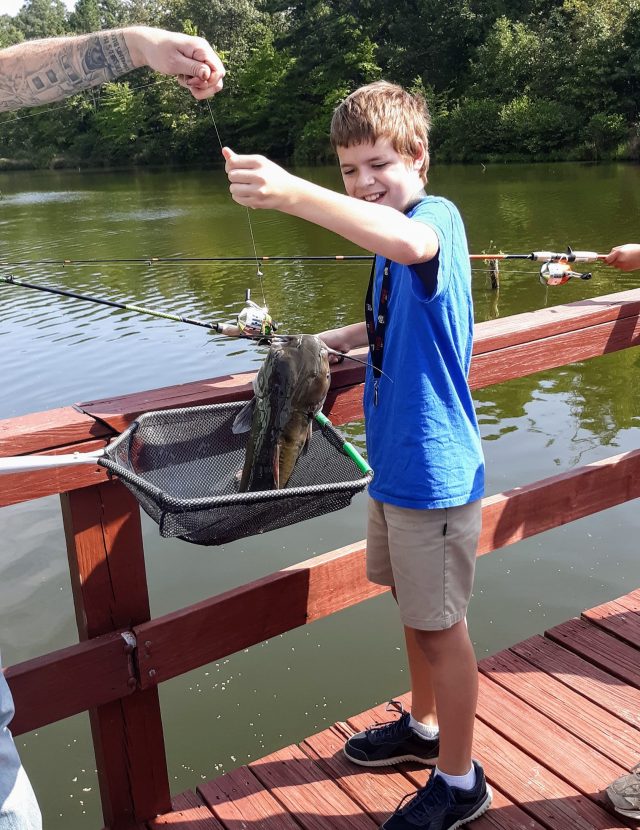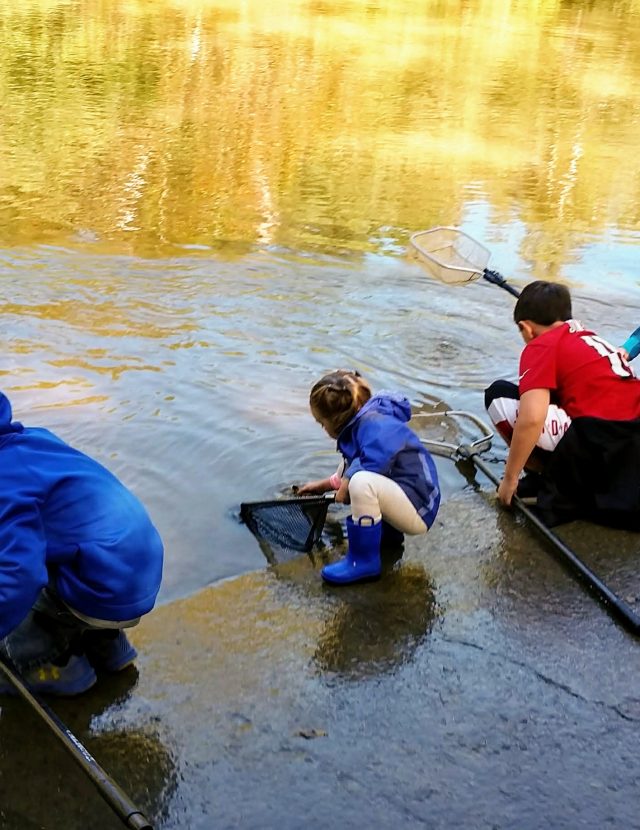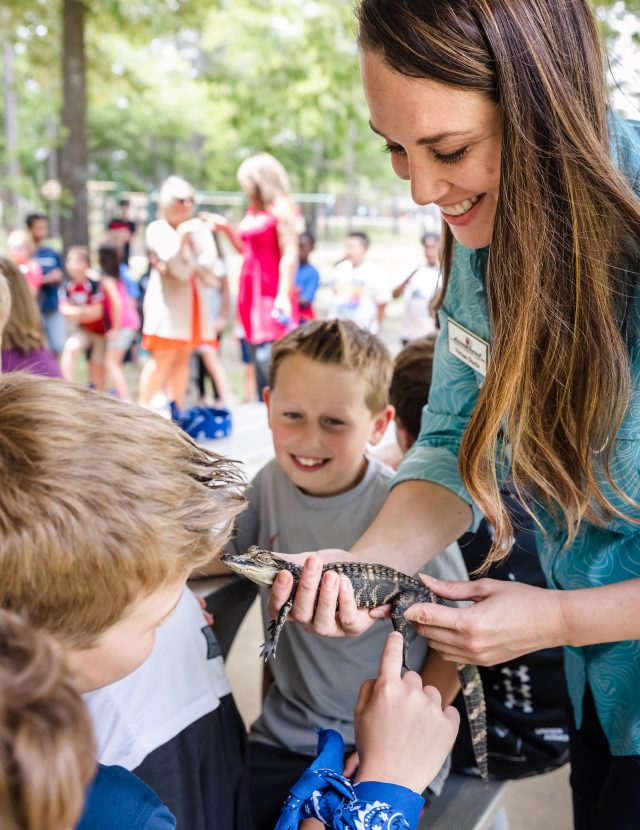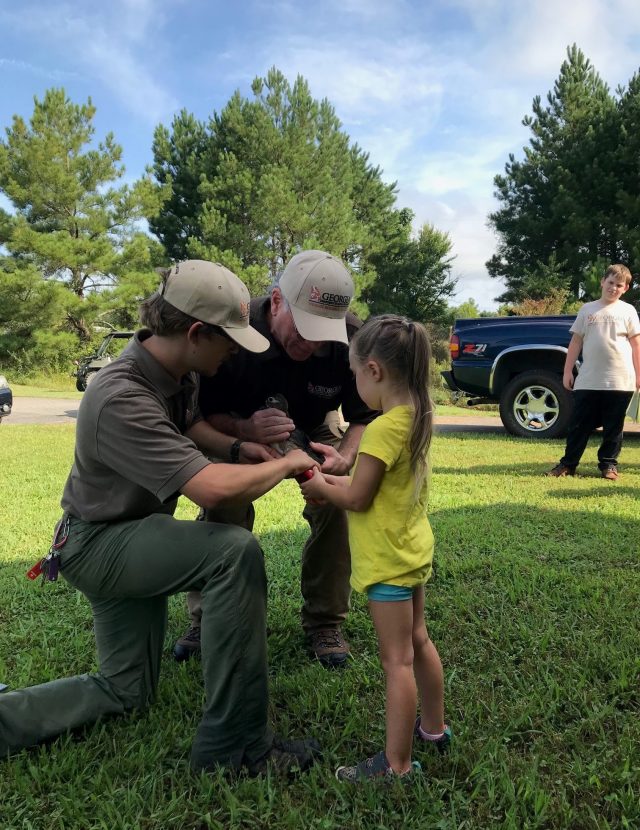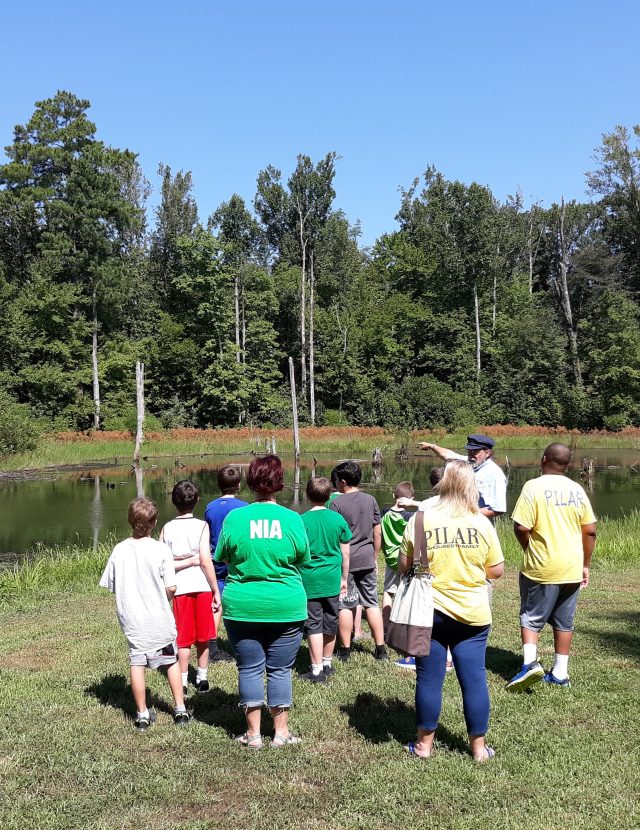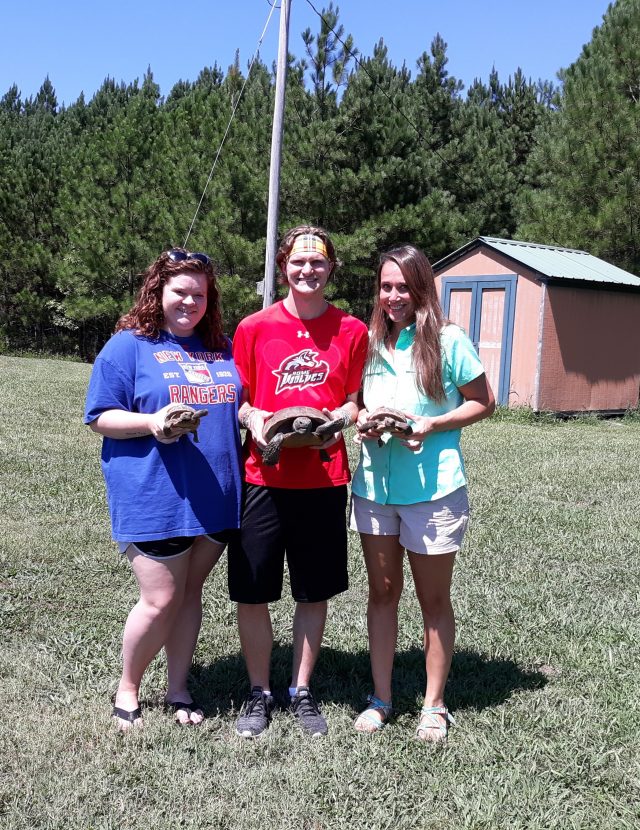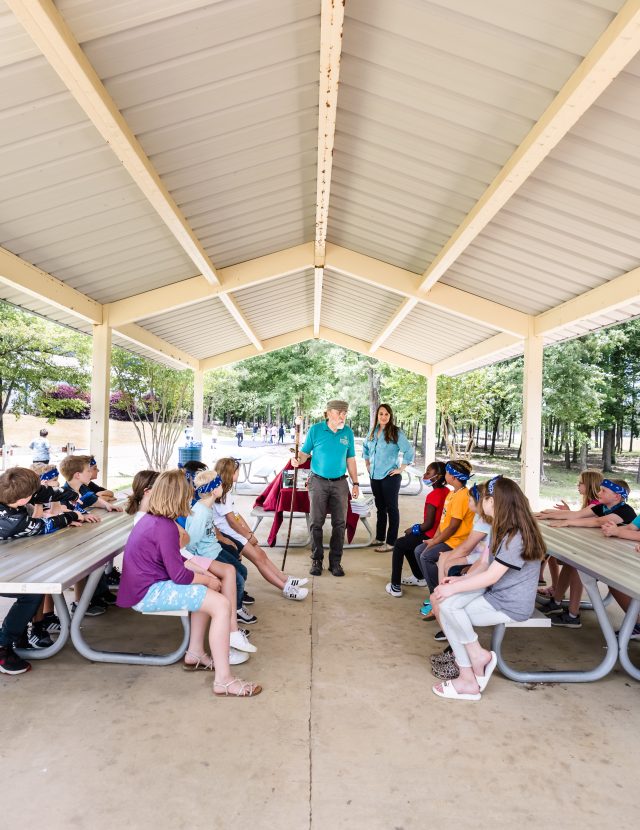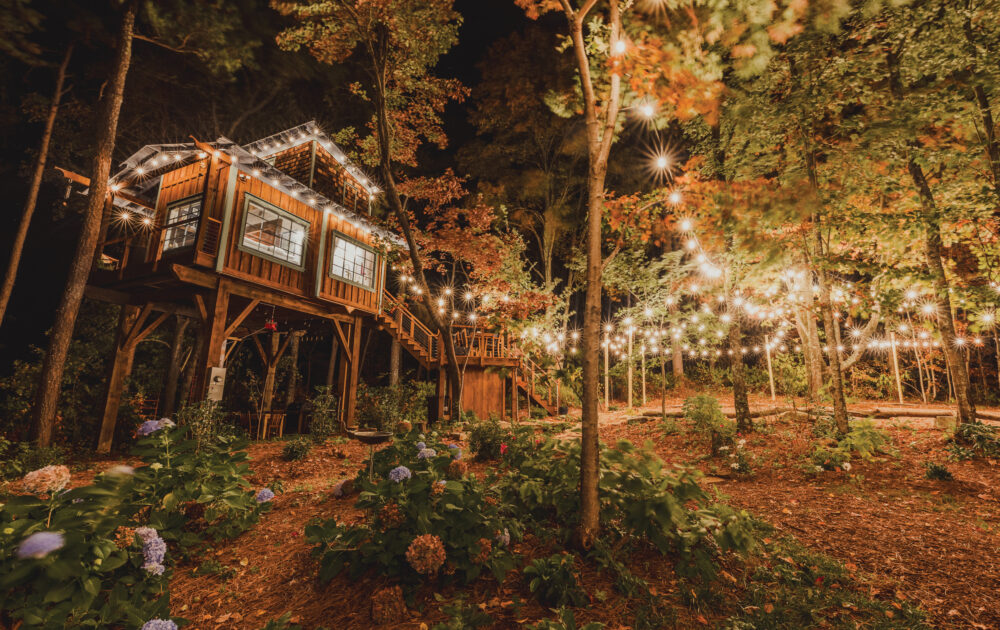
Photos Andy Calvert
Tucked away within 337 acres of the protected arrowhead wildlife management area lies a hidden trove of natural wonders. In addition to a 2.2 mile interpretive nature trail is an expansive education and aquatic center; home to dozens of native reptiles and amphibians. It houses an elaborate collection of pelts, mounted specimens, skulls, and nests; sure to pique the curiosity of all who walk through the doors.
The Arrowhead Environmental Educational Center (AEEC) represents the groundbreaking cooperation of the Wildlife Resources Division of the Department of Natural Resources (DNR) and local school systems. This first-of-its-kind collaboration provides an educational program which highlights the importance of environmental conservation in conjunction with expanded life science curriculum to all students grades kindergarten through twelve.
The center was created thanks to the tireless efforts of Noel Holcomb, former commissioner of the Georgia Department of Natural Resources (then Region One Supervisor), and Kim Kilgore (then Kim Mehaffey), wildlife rehabilitator and biology teacher at Model High School, who developed a business model that has inspired similar education partnerships throughout the state. Here, students learn about ecological principles through hands-on activities and experiences. The drive for such programming is the fundamental idea that the future of our natural resources rests in the hands of the children whose lives the AEEC touches through its facility as well as outreach programs.
The Early Years
The property now recognized as the location of the Region One Headquarters of the DNR Game Management Section was once a private farming community with two lakes open as a public fishing area. Later developed as a hatchery, the property was purchased by the state in 1968 and its hatchery operation expanded to include 14 total hatchery ponds. They produced channel catfish for the public fishing area on site as well as channel catfish, largemouth bass, blue gill and Redear sunfish for the state’s private pond stocking program. In 1979, the hatchery closed for good due to state budget cuts, though the public fishing area remained open.
The DNR Game Management activities shifted toward small game as well as a Canada goose restoration project which utilized the old hatchery ponds to successfully establish a resident nesting flock in north Georgia. In the early nineties, under a project MARSH grant from Ducks Unlimited, several drain structures and risers were replaced and the hatchery ponds continued to be managed for the benefit of all waterfowl. In 1994, Holcomb and Kilgore saw an opportunity to put environmental education quite literally in the hands of local children.
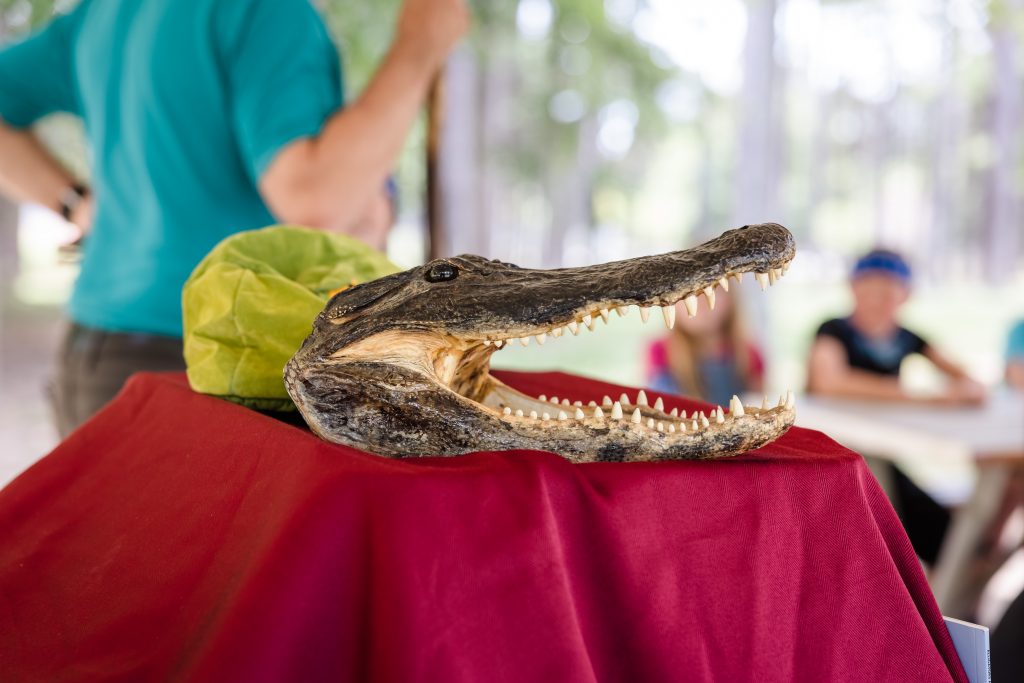
A Pioneer Alliance
Acknowledging the need for strong environmental education driven by the reality of growing populations, shortages of natural resources, air and water quality, and threatened and endangered species, Kilgore drafted a proposal to Superintendent of the Floyd County School System for an educational coordinator/teacher to be assigned to the existing facilities of the Region One offices of the DNR. The Wildlife Resources Division Region One agreed to provide all facilities, a vehicle for outreach programs, office space, secretarial support, and all necessary start up supplies.
Never before had there been such a collaboration. The proposal soon gained wide support from Northwest Georgia Regional Educational Services Agency (RESA). The new Arrowhead Environmental Education Center (AEEC) would be mutually beneficial for Arrowhead Region One Headquarters as well as for the education community. “Noel Holcomb explained to me that in the beginning, they had built this incredible nature trail and pavilion for the purpose of environmental education, but few teachers felt comfortable bringing their students out here. As a science teacher and wildlife rehabilitator I saw the potential right away,” says Kilgore.
The center began its program in August of 1994 and by December of 1994, 75 teachers and 2,000 students had participated. This unique business model has inspired other facilities to adopt similar partnerships for their community education; specifically, McDuffie Environmental Education Center in Dearing, Georgia and Grand Bay Wetland Education Center in Valdosta, Georgia. Currently, there are over seven environmental education centers operating in the state of Georgia. Today, the AEEC has reached over 150,000 students in grades K-12; teaching them the value of precious natural resources and everyone’s responsibility to be good stewards of our environment.
AAEC Programming
The current director Vivian Davis mindfully develops curriculum and outreach visits in line with state standards exploring topics such as habitat, animal adaptations, life cycles, seed dispersion, and pollution through a hands on, minds on approach. “I’ve never seen a kid who wasn’t completely enamored when I introduce an animal in the classroom. At first, they may be a bit apprehensive of an unfamiliar creature — for example the first time they meet a snake — but once they have had a chance to gain a full understanding of the animal and its role in the ecosystem, they immediately develop an appreciation for it, saying, ‘I didn’t think that it would feel that way.’
They know it is a reptile, and that it has dry scales, but they are utterly surprised to experience the snake’s texture. It is a joy to watch them internalize it and try to describe what it feels like. Similarly, to witness students’ surprise when they look in the eyes of an alligator. Never before have they realized how dynamic the eyes of an alligator are. Previously, the children may have read about them or see them on TV, but how often do you think a child gets to be face to face with an alligator to really experience that?” says Davis. The students get a chance to explore firsthand the importance of conservation, recycling, composting, and wildlife protection.
“What is really incredible is that these children are getting this exposure through their school system,” explains Davis. Fellow educator, storyteller, and naturalist Terrell Shaw joins Davis at the AEEC part-time under a grant from the Non-Game division of the Department of Natural Resources. He commands attention with his fun-loving antics and silly educational songs. He describes his approach to education as using the environment as an integrated context for learning. “I believe to my toes that learning in the context of the environment around us sticks.
Kids who are out in the real world, examining real things are going to develop a natural curiosity. They want to learn more, and research those things that they have been looking at outside. We integrate math, social studies, and language arts using the outdoors. Education has never been about filling vessels, it’s about igniting fires. The outdoors is the best way to ignite this passion for learning,” says Shaw.
Community Outreach
While on a field trip to the AEEC students can take advantage of the Public Fishing Area, two-mile interpretive natural trail, indoor classroom, and outdoor pavilion. The AEEC engages students year-round at such community events as Outdoor Adventure Day honoring National Hunting Fishing Day at James H. Floyd State Park, and Duck’s Unlimited Greenwings hosted at the Arrowhead. The center remains dedicated to help kids develop a passion for the environment and its conservation, through the support of businesses and organizations such as Ducks Unlimited, Coosa River Basin Initiative (CRBI), Trout Unlimited Coosa Valley Chapter, and International Paper.
For more information about scheduling a field trip, or sponsoring an event reach out to Vivian Davis at vdavis@floydboe.net



